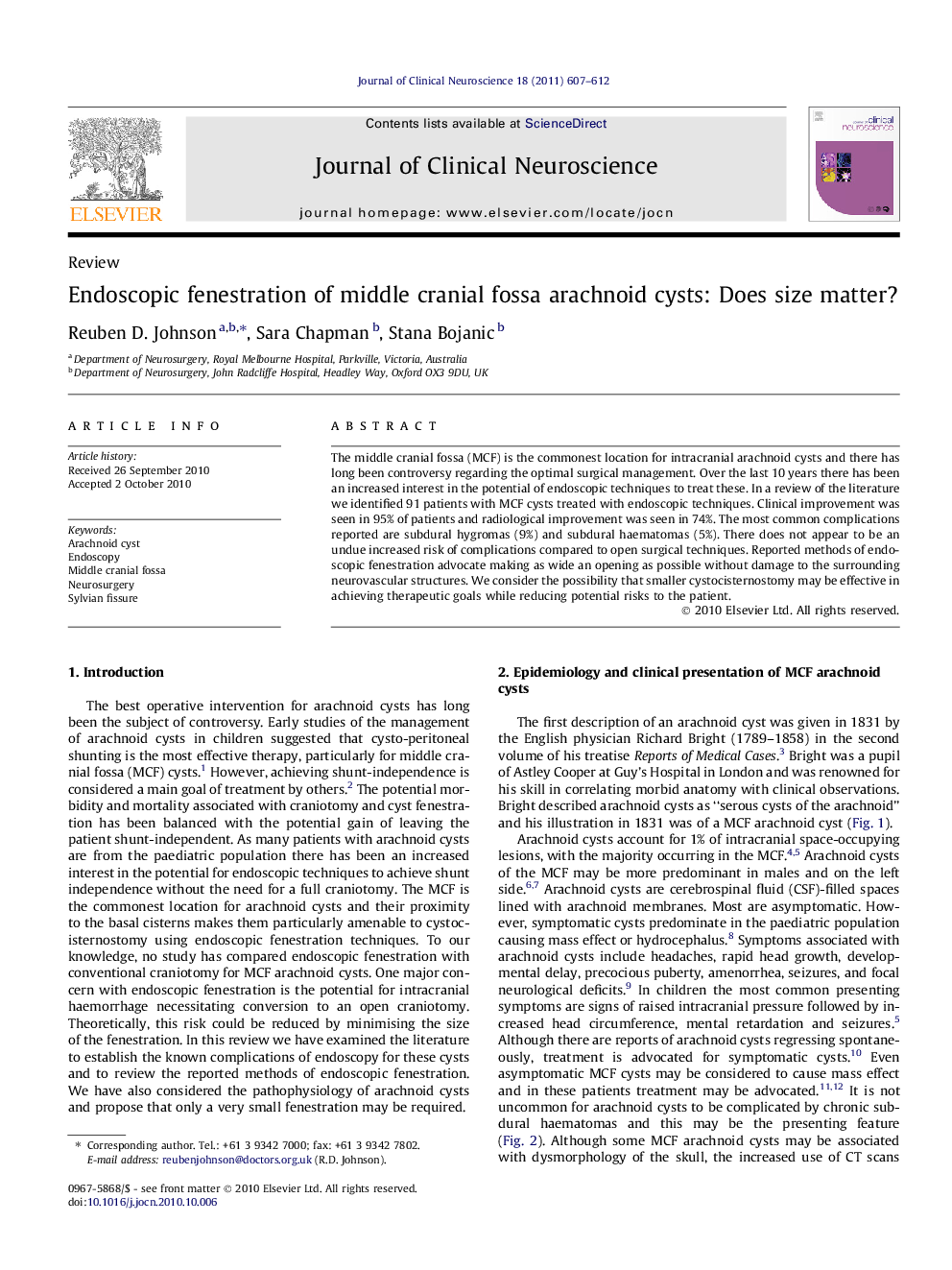| Article ID | Journal | Published Year | Pages | File Type |
|---|---|---|---|---|
| 3061194 | Journal of Clinical Neuroscience | 2011 | 6 Pages |
The middle cranial fossa (MCF) is the commonest location for intracranial arachnoid cysts and there has long been controversy regarding the optimal surgical management. Over the last 10 years there has been an increased interest in the potential of endoscopic techniques to treat these. In a review of the literature we identified 91 patients with MCF cysts treated with endoscopic techniques. Clinical improvement was seen in 95% of patients and radiological improvement was seen in 74%. The most common complications reported are subdural hygromas (9%) and subdural haematomas (5%). There does not appear to be an undue increased risk of complications compared to open surgical techniques. Reported methods of endoscopic fenestration advocate making as wide an opening as possible without damage to the surrounding neurovascular structures. We consider the possibility that smaller cystocisternostomy may be effective in achieving therapeutic goals while reducing potential risks to the patient.
